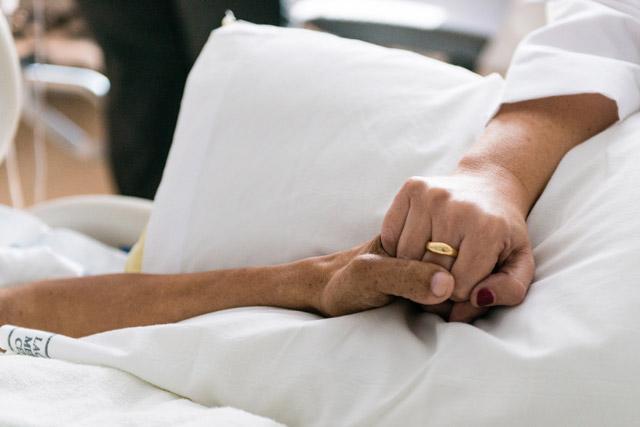You are here
Massage therapy eases pain, reduces opioid need
By Reuters - Dec 24,2017 - Last updated at Dec 24,2017

Photo courtesy of verywell.com
Light massage can reduce pain, anxiety and the need for opioid medication in terminally ill patients, a Swedish study suggests.
“All end-of-life patients experience existential pain or existential suffering,” coauthor Linda Bjorkhem-Bergman told Reuters Health. “This pain is difficult to treat pharmacologically and complementary methods, such as massage, provide an alternative.”
Bergman and colleagues studied 41 hospice patients who received tactile massage of the hands, feet and/or back, depending upon the individual’s preference. Tactile massage is a type of light massage that does not involve deep tissue penetration.
During their stay in hospice, patients received an average of three treatments lasting 15 to 45 minutes. Afterward, their perceived pain, well-being and anxiety decreased by approximately 2 points on a 10-point scale, indicating an improvement. The effect was obvious after the first session and persisted after later treatments, researchers found.
Furthermore, patients requested just half their typical “rescue dose” medication in the 24 hours following the superficial touch therapy, according to the report in BMJ Supportive and Palliative Care.
Rescue doses are “extra” doses of pain or anxiolytic medication given over and above one’s typical dosage.
But why massage to just the hands, feet and back?
“It’s probably the stimulation of the more sensitive receptors in these areas of the skin that release positive hormones,” Bergman continues in an e-mail.
The chief hormone released, oxytocin, is known to stimulate feelings of well-being and comfort, while cortisol and nitric oxide, both considered “stress” hormones that increase blood pressure and heart rate, are inhibited.
There were no adverse effects among patients in the present study, but the authors advise against tactile massage in people with terminal heart failure.
“It could be a risk factor because it might cause blood pressure to decrease even further,” says Bergman.
Healthcare cost is always an issue, regardless of treatment type. Asked if tactile massage might be a financially superior method to help palliative patients cope compared to standard pharmaceutical approaches, experts say, unfortunately, no.
“Morphine and other opioids are so cheap and therapists’ time is expensive,” Bergman said.
Still, “massage therapy can be an effective therapeutic modality that may be helpful... in cases where patients desire a more natural approach,” said JD Elder, a licensed massage therapist and Coordinator of Complementary Therapies at Mount Sinai School of Medicine in New York City.
An observational study such as this one can’t prove that tactile massage caused pain to ease. However, Elder said in an e-mail, “We are tactile creatures and it’s the intent and delivery of the touch that matters. Massage therapists use their knowledge of anatomy to guide how they touch in a specific way for a specific intent say, to comfort or for rehabilitation.”
Related Articles
AMMAN — Around 90 per cent of people in Jordan in need of palliative care, which addresses the physical and psychological needs of patients
Only 50 to 60 per cent of all cancer patients in Jordan receive palliative care, experts said on Thursday, calling for expanding programmes to provide this care for all patients.
AMMAN — Pain management can help relieve acute and chronic pain without the need for surgeries and invasive procedures, according to e












